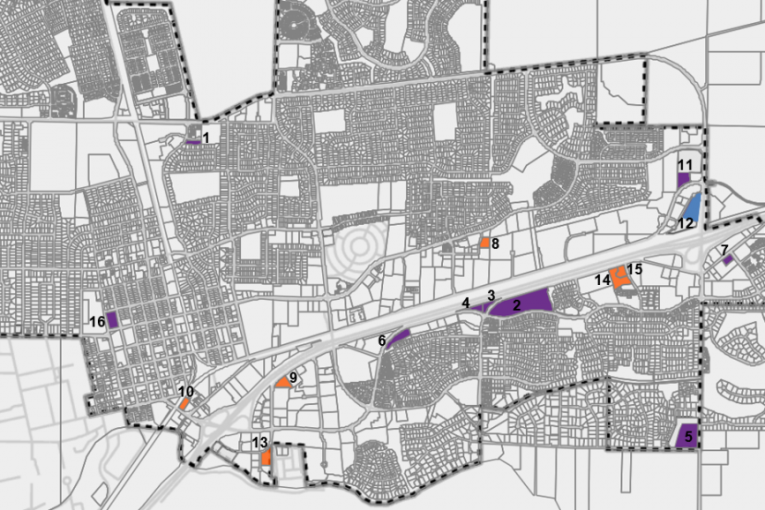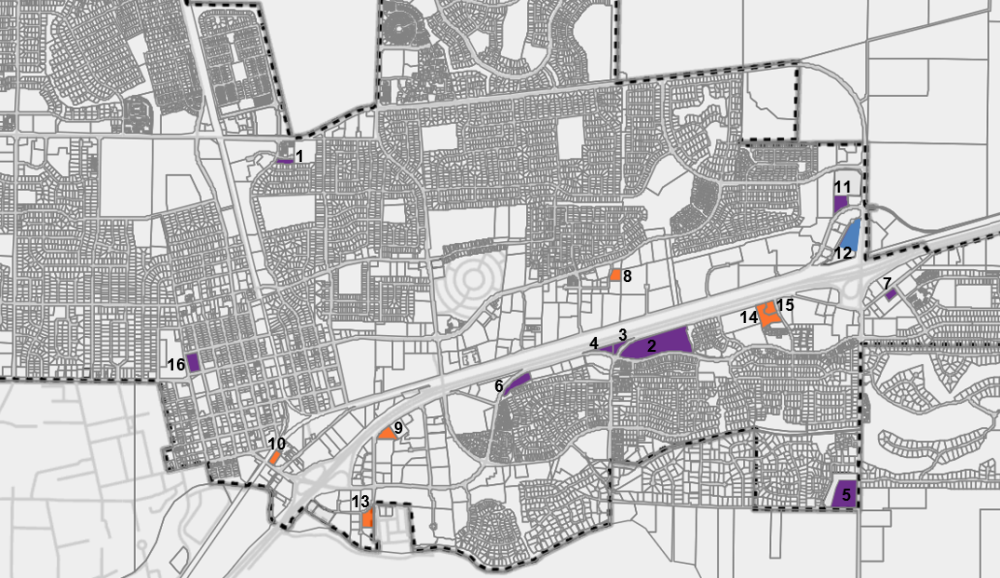

By David M. Greenwald
Executive Editor
Davis, CA – The city of Davis has twice failed to get its Housing Element approved by HCD. In September, the city received another “Notice of Violation” from HCD noting that the city’s most recent draft which was submitted way back on February 2, 2023, “does not comply with requirements under State Housing Element Law.”
On April 3, 2023, HCD issued a third findings letter to the City noting “revisions were still necessary for the housing element to be compliant with State Housing Element Law.”
One of the requirements for the city was to rezone sufficient land to meet their allotment under RHNA (Regional Housing Needs Allocation) of nearly 2100 total units and over 900 affordable units.
In a notice from the city on Wednesday, Eric Lee, Senior Planner noted, “The City of Davis has been working on additional changes to the City’s 2021-2029 Housing Element Update in response to comments from the California Department of Housing and Community  Development.”
Development.”
Critically, the city “is processing a rezone of a number of sites within the city to redesignate them for housing sites. The identification of sites and a rezone is called for in the Housing Element Update and is necessary in order to meet the city’s state mandated housing allocation.”
In accordance with this, the city sent out a notice of the City’s intent to adopt a negative declaration related to the environmental analysis for this project with a 20-day public comment period.
A Planning Commission hearing is scheduled for November 8.
The city, in the notice, states, “The proposed project does not include any actual physical development of housing identified in the Housing Element.”
However, “the City proposes to revise its site inventory to identify additional sites to accommodate the (revised) shortfall of 496 lower income housing units, as discussed in the Housing Element.”
The City also proposes to “rezone 16 sites and has identified a 753-unit capacity that exceeds the 496 dwelling unit shortfall requirement.”
The 16 sites would be zoned to a high density residential or mixed use, with a required 20 units per acre in order to meet density requirements.
 In addition, the city said that “the City of Davis has prepared an Initial Study for the project and intends to adopt a Negative Declaration as part of the subsequent City Council public hearing to be scheduled.”
In addition, the city said that “the City of Davis has prepared an Initial Study for the project and intends to adopt a Negative Declaration as part of the subsequent City Council public hearing to be scheduled.”


Ugh…I suppose technically it’s all necessary….but all I can imagine is more traffic and less parking downtown (I already go there much less than I did even 5 years ago).
In part because there is less in the downtown. Adding people without vehicles probably isn’t going to cause a parking problem.
Even now, it’s a pain to drive downtown because of all the foot traffic and lack of parking.
Ideally, the city should close most of the streets downtown and provide peripheral parking and mass transit options. But that’s not going to happen…..that takes planning, and coordinating with planned growth. Also, local neighborhood commercial development needs to be encouraged too…it’s be great if there were multiple neighborhood locations with integrated surrounding residential with their own unique small restaurants, brewery/pub and coffee shops (I miss Cole Valley)….but yeah…that’s a pipe dream.
Keith
Maybe not so much of a pipe dream. (I miss all of the neighborhoods where I lived in the East Bay.) We need to have corridor Specific Plans to create more mixed use development within walking distance of more neighborhoods. Donna Neville has talked about this during her campaign and I think other Council members would support this. We also need to encourage this in the proposed new developments. We need to end SF residential zoning on any arterial and switch to mixed use. We should start with a survey of the housing on those streets to see what is owned vs rented.
Richard,
I’m a big believer that public parks should be surrounded by high density housing as well as have a public commercial component as a revenue generator. Imagine if the Davis Arts Center were multi storied that put on more and grander events and if there was a nearby or attached public commercial building that housed a restaurant with open views of the park. The city could then zone across the street on Covell (where there are currently 2 story condos/apartments) for higher density neighborhood mixed use. Something similar could be done with Central Park and that bicycle museum center building. Basically you use public space and public buildings/restaurants/coffee shops…etc…to be the anchor for further neighborhood commercial development/redevelopment. Plus the city gets to generate some much needed revenue by capitalizing on some of their existing assets (public parks).
I’m concerned that these rezones might be consuming commercially zoned properties in many cases. The mixed use is good–maybe retail/dining/services can be added to increase walkability. The City needs to be aiming for the “15 minute” neighborhood in these places is we’re going to achieve our climate action plan goals. Increasing non-auto accessibility is one of the specific measures in the CAP.
The giant inequity tomato in the room – and this is unfortunately not yet a topic with any momentum in regards to the hyper-current I-80 discussion – is that it’s subjectively unpleasant and objectively unhealthy to live so close to a major highway.
Slowly increasing numbers of electric vehicles and what’s currently – according to the latest actions of Caltrans – utopian improvement in rail transportation will not significantly improve the noise situation. I don’t believe that more studies are necessary to convince us of this: it’s also really loud in close proximity to CA-113, which has much, much less traffic volume then its connected big sister.
While a “cap” is possible for most of 113 within Davis, it’s obviously not for 80 because it’s not in any kind of trench or below grade. The enclosure which I proposed a few years ago as a concept may not significantly improve noise from wind and perhaps even less so from subsurface vibration. (It will help reduce particle emissions a bit and the space it provides could help the city generate a huge amount of solar power,)
So I think that the only long-term sustainable solution is a rerouting of I-80, south of the city, partly underground. It would have the additional benefit of improving road safety in West Sacramento as it would create some direct freeway egress for the multiple logistics centers in that area.
But in relation to re-zoning – kind of an understatement – it would return a lot of land for sustainable and dense mixed use…. right in the middle of the city and thus adjacent to both UC Davis, future improved rail transportation services and many existing neighborhoods.
Nothing more than a pipe dream Todd. Keep on dreaming and no one with any authority will ever listen to you.
It’s simply not going to happen